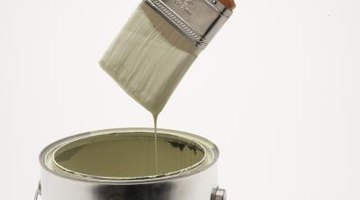How to Use Untreated Douglas Fir Outdoors
If you are planning an outdoor building project, you first need to select which wood to use. Douglas fir lumber is widely available, especially in western North America, and usually less expensive than treated lumber or naturally rot-resistant woods such as cedar, redwood or cypress that are typically chosen for outdoor use. Fir lumber comes in a variety of lengths and dimensions to match the needs of any outdoor building project. A water-repellent finish is needed to prevent the untreated wood from decaying.

Step 1

Make a list of materials to purchase, using the plans for your project. Determine the quantity and dimensions of lumber needed, keeping in mind the most efficient use; for example, if 4- foot lengths are needed for the project, buy boards 8 or 12 feet long to avoid waste. Also plan to buy rust-proof galvanized or stainless steel fasteners and hardware to assemble the project.
Step 2

Lumber comes in several grades, depending on its intended use: structural, appearance and factory or shop grade. Structural lumber is used for its strength and load-bearing capacity, appearance grade is for finish work such as cabinetry and factory grade is typically re-cut and used as a component for items such as window casings, molding or trim. Consult your supplier about the grades available and buy the appropriate grade of lumber for your project, avoiding boards with excessive knots, obvious cracks or warping.
Step 3

Cut the boards to the required length, remembering the sage advice to "measure twice, cut once". Sand the cut edges if a smooth, splinter-free finish is important. Assemble your project using rustproof nails or screws to avoid unsightly rust streaks later.
Step 4

Finish the project with a water-resistant coating such as linseed or tung oil, varnish or paint. Oil finishes are absorbed into wood, making it water-repellent. Varnish and paint forms a protective barrier on the surface of wood to prevent the absorption of moisture.
References
Resources
Tips
- Cover or store outdoor items such as patio furniture indoors during winter to extend their life.
- Renew the protective coating on your outdoor structures every one to three years as needed to prevent deterioration.
Warnings
- Use eye protection when sawing wood and using a hammer or nail gun. Read and follow the label's safety instructions when applying oil, varnish or paint and avoid breathing the fumes.
Writer Bio
Tamara Muldoon has been writing professionally since 1987, covering health and fitness for a regional health-care organization. Living in Oregon, she is a certified master gardener and also writes on home-and-garden subjects. Muldoon studied magazine feature writing with the Long Ridge Writers Group.
Photo Credits
- Thinkstock/Comstock/Getty Images
- Comstock Images/Comstock/Getty Images
- Dick Luria/Photodisc/Getty Images
- Polka Dot Images/Polka Dot/Getty Images
- Thomas Northcut/Photodisc/Getty Images
More Articles



